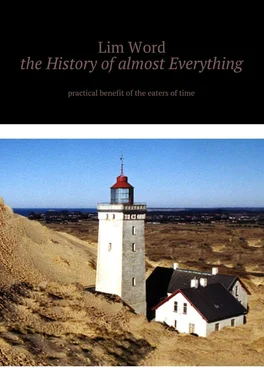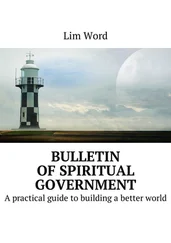Government troops are approaching. They oppress the rebels, but the death of the commander-in-chief of the prince forces from illness gives Pugachev’s troops a month to regroup. There is, in particular, a connection with the formations of the 19-year-old Salavat Yulaev, the improvising poet, the leader of the uprising in Bashkortostan. At the peak of the uprising, the army reaches 40,000 people, Pugachev creates a Military Collegium to manage it, with military courts, and all the rest.
The peasant army captures most of Kazan (except the Kremlin). Here, in the prison of the Secret Commission, Pugachev discovers his first wife, Sophia, with three children. They carry them with them, separately, saying that it is a family of a Cossack “visited” for his name. He sometimes mentions his “son”, Paul the First, carries the portrait of the heir with him, turns to him when he says the toasts.
“Tsar Peter the Third” spreads manifestos about liberty for the peasants, distributes stocks of salt and bread to the inhabitants, his army, greeted by the people with enthusiasm, blessings of village fathers, is approaching the Moscow province. Further, on August 7, 1774, the rebels, with a bell ringing and bread and salt, the Saratov opens.
Instead of an immediate attack on Moscow, Pugachev cautious and turns to Astrakhan – one version – to gain strength in the Don army, on the other – to finish this idea and dissolve in the boundless steppes. On the way, he is overtaken by a large government detachment. Because of the sudden raid of the cavalry, the insurgents immediately lose all 24 cannon. Artillery already in those days – the god of war, and the detachments of the advancing peasants are scattered by volleys of the tsar’s guns. Later, the Cossack colonels, wishing to earn their pardon, knit the peasant leader and give him out to General Suvorov, who came to the rescue of the uprising. The future generalissimo personally guards the cage with Emelian Pugachev. After the investigation, on January 10, 1775, on Bolotnaya Square in Moscow, the people’s tsar was executed by cutting off the head. Here, 104 years ago, Cossack and peasant leader Stepan Razin was quartered.
The insurrection of the peasants led by Pugachev can be compared with the serf riot in England that occurred, under the nominal start of Wat Tyler, four centuries ago – in 1381. During the Hundred Years War, in order to feed the army, King Richard II raises the tax for the lower classes-now 12 pence from each toiler. The people are indignant, rises, reaches the capital, thoroughly shakes all the Foggy Albion. Six months later, thanks to the troops, the deceit and the promises of the monarch to rectify the situation, the excitement subsided. Wat Tyler dies, as well as most other leaders. However, the central authorities make very correct conclusions. They declare guilty insatiable officials on the ground, proclaim a general amnesty, stop attempts to introduce illegal taxes. Large landowners resolve conflicts with their employees (yes, participants in the insurrection) as a rule, through the courts. When discussing the rent for the land, the peasants are not averse to recalling their combat past aloud…
By the fifteenth century, the institution of serfdom in England ceased to exist.
…To strengthen the administrative apparatus, the government of Catherine II disaggregates the province – instead of the 23 centers of power they become 56 (governors, gubernias, the essence of synonyms). Accordingly, the bureaucracy, the power block, doubles, and the costs for them are increased four and a half times.
As a result of the uprising, the situation of serf factory workers improves somewhat, but there are no conclusions about the allowances for the entire peasantry. And, this decision of the government, leads, in the first half of the twentieth century, to the collapse of the state and the physical destruction of the Russian nobility.
Many prominent enlighteners, generals, statesmen are united by Masonic lodges. Catherine initially is loyal to them, but after the French Revolution, organized, in many ways, by this community, radically changes its position. The Empress expels from the country, removes from the people (publisher Novikov, etc.) people for mere involvement in Freemasonry.
A year before the start of the Pugachev uprising, in 1772, the First Section of the Polish-Lithuanian Commonwealth took place. The Polish Saeima abuses liberum veto, the principle of declaring a ban on the discussion of the resolution by at least one dissenting party. The Russian Ambassador Repnin worked well on creating the pro-Russian stratum. The King of Poland, Stanislav Ponyatovsky, in the past – the lover of Catherine, her protege on the throne treats Russia fairly friendly, but he and his followers can no longer manage anything. The country is divided into many small “sejmics”, enters a civil war even before centralized states pay attention to it. So, according to mutual agreement, contingents of Prussia, Austria and Russia join Poland. The troops of AV Suvorov occupy the ancient capital of this country, covered with mysticism Krakow, as well as part of the current Baltic and Byelorussian (Polotsk, Mogilev gubernias, six years later transformed into one Belarusian province). Actually, Prussia inherits the present West Prussia. Austria receives Galicia, without Krakow, Lviv and a number of adjoining lands. Further allies occupy Warsaw, and demand from the Diet to ratify legality of an event. For the quickest decision-making, the principle “Liberalum vito” is canceled, and most say “yes.”
A threateningly large, little less than the current EU, while internally unstable and contradictory, the Rzeczpospolita is now shrinking to a reasonable level.
In 1775, according to the decree of Catherine, finally eliminated (New, near the former Chertomlykskaya, from the 50-ies of the twentieth century on the bottom of the Kakhovka water reservoir) Zaporizhzhya Sich. Turkey is quiet, it is necessary to establish friendly relations with Poland. On the night of June 5, 50 assembled cavalry regiments approach the Novaya Sich, Don Cossacks, Hungarians, Wallachians, and up to 10,000 infantry. Kozaki, after discussions, accept an ultimatum and leave the fortress. After this, the fortifications are destroyed by artillery fire. Some of the Cossacks go to the Crimean Khanate (under the protectorate of Russia, but fairly independent), then to Turkey, to serve the Ottomans (Transdanubian Sich). Some remain in the service of Russia, the sergeant-major receive the nobility, the lower ranks, if they are able to withstand discipline, join the dragoon and hussar regiments, and the irregular “Army of faithful Zaporozhets” settles on the left bank of the Kuban.
The army Zaporizhzhya is colorful, covered with legends, but only in about 70% of cases it is loyal to Russia and actively supports it, while in 30% it opposes, or is relatively neutral. Separate detachments are not connected with hierarchy, reporting with a stable state center, therefore they allow unjustified cruelty when conducting military operations (and even in peacetime, with their own population, to recall even the popular song “Galya the Young”). About this artistically narrates N. Gogol in a famous work, Polish sources (Henryk Sienkiewicz, “Fire and sword”) and, of course, the chief Kobzar, Taras Shevchenko (in particular, the poem “Gaydamaky”):
Uman lit
Neither in the house nor in the chapel
Nowhere is left
Everything fell.
…Haydamaky
The walls were broken down, —
Destroyed about stones
The priests were smashed
And schoolchildren in the well
Live buried.
Until the night, the foxes fisted;
…There is no soul left.
Blood me, blood!
Noble blood, because I want to drink!
In a calm environment, not on nerves, after reading the reports on the actions of his subordinates in the capture of some fiercely resisting city, the monarch is quite capable of severely punishing the commander who committed excesses with the civilian population. If only he is not Peter the First, although then it is possible. Well, and “their” guys “their”, in a small free squad, are usually strictly not judged.
Читать дальше












